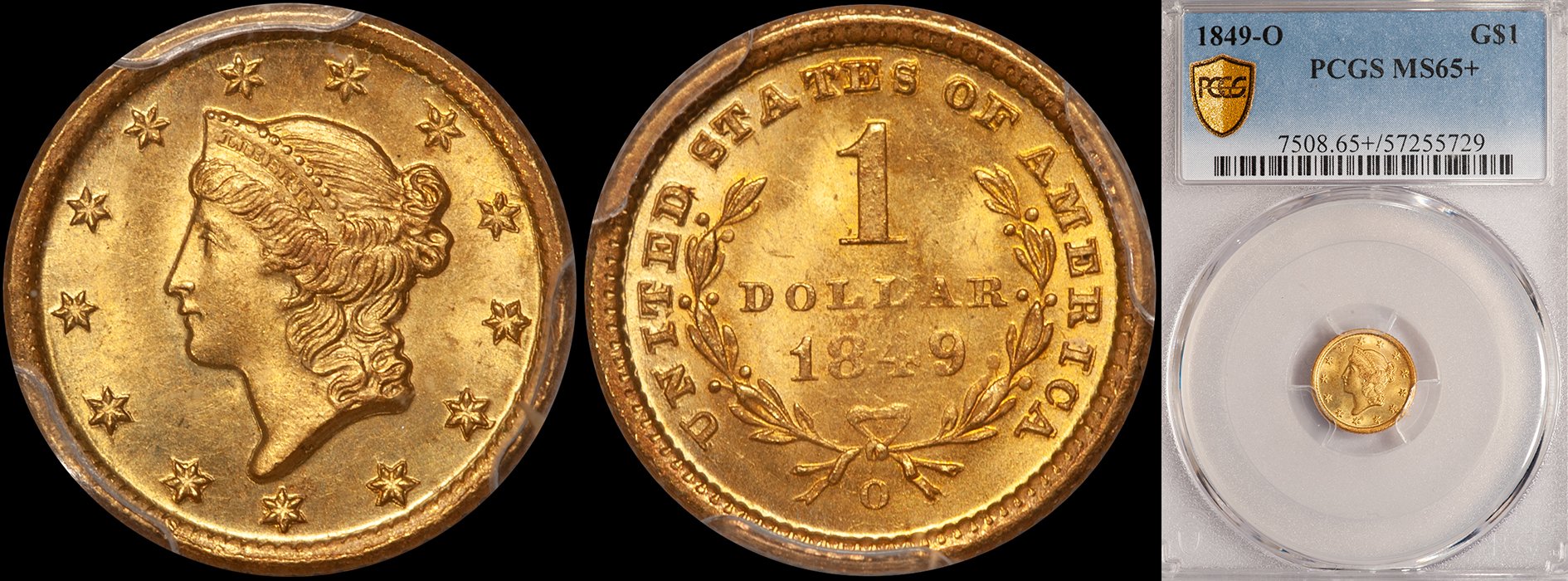The Amazing J-115 1849 "Handmade" Gold Dollar Pattern
/One of my all-time favorite gold issue is the rare 1849 Pattern gold dollar (Judd-115) which is the only US coin which was entirely engraved by hand at the Mint. DWN purchased the highest graded of just four known in gold at the 2024 Heritage FUN sale for $105,000.
J-115 1849 "Handmade" Gold Dollar in PCGS MS62 CAC
I first learned about this issue when I read the NERCG 1979 auction catalog which contained this exact coin. I finally got to see them live when two different examples were sold in the Stack’s 7/2008 auction.
What makes J-115 so remarkable is that James Longacre, the Mint Engraver, hand cut each one. Because of this, each is unique. All four have different planchet alloys in as well. The piece I purchased is the only one which has not been metallurgically tested. At 23.4 grains, it is heavier than the other three and presumably contains more gold than the second heaviest, which has a recorded weight of 22.76 grains. It has been tested to show that it has an alloy of 90% gold, 3.5% silver and 6.5% copper.
The reason for creating this issue was twofold: the Mint’s fears that the newly introduced Type One gold dollars with a diameter of 13mm would be confused for half dimes which had a diameter of 15.5mm and the ability to strike a coin this small (and thin) in a metal as soft as gold. The patterns were wider at 16mm and this would also likely aid in better strikes for this brand-new design and denomination. This wider diameter for gold dollars was not adopted.
Why were these coins hand-made and not struck with coin dies? One would have to assume that this was a rush job and that Longacre had to produce coins in a very short period of time. It would be interesting to go through mint records from 1849 to see if there were problems with pre-production striking of gold dollars (as there were with the brand new double eagles), and exactly who pointed out the unlikely possibility of this denomination being confused with half dimes.
In addition to the four known in gold, there are another four which are gold-plated silver (J-116).
This extremely historic and visually cool coin was sold by DWN as agent to a prominent Midwestern collector who is working on a high quality set of gold dollars.
UPDATED 3/7/24: I received a call today from New Jersey dealer Bill Shamhart who told me that he had owned multiple examples of J-115 and J-116 at one time and had done extensive research on these issues. According to him, the four of five known “gold-plated silver” examples are, in fact, 14 karat gold and were almost certainly made on planchets which were likely cut from a pocket watch case(s). Two examples—including the one I purchased—are distinctly heavier and the one which has been analyzed by a SEM process (ex Bareford Collection) shows a composition which is 90% gold and 10% silver and copper. When the present coin is eventually analyzed, it is likely to show a similar composition.
My conclusion is that there are only two examples of J-115 that are struck using the proper composition and these are the most desirable pieces as the other are made with severely debased gold.
Are you interested in acquiring important one-of-a-kind rarities such as this amazing J-115 gold pattern? If so, please contact me via phone at (214) 675-9897 or by email at dwn@ont.com











